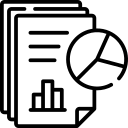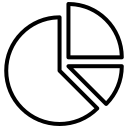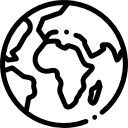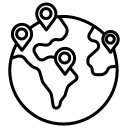$4450
$3560
The Hyperpigmentation Disorder Treatment Market size is projected to reach US$ 12.89 billion by 2031 from US$ 7.50 billion in 2024. The market is expected to register a CAGR of 8.2% during 2025–2031.
Hyperpigmentation Disorder Treatment Market Analysis
The rising prevalence of hyperpigmentation disorders, increasing influence from social media, and rapid advancements in treatment technologies and modalities drive market growth. The increasing demand for natural and plant-based ingredients, the evolution of light and laser-based therapies, and the surging integration of artificial intelligence and telemedicine are expected to create ample opportunities for the market in the coming years.
Hyperpigmentation Disorder Treatment Market Overview
Melasma, post-inflammatory hyperpigmentation, and age spots are often caused by exposure to the sun, hormonal changes, and the natural aging process. The demand for hyperpigmentation disorder treatment is surging, driven by growing aesthetic awareness among consumers, the influence of social media on skincare routines, and the desire for non-invasive procedures, including topical agents, laser therapies, chemical peels, and IPL. AI-based diagnostics for personalized treatments combine brightening and anti-aging benefits with natural/organic elements. North America is currently leading the market, while APAC is the most dynamic market, driven by high levels of pollution and increasing disposable income.
Customize Research To Suit Your Requirement
We can optimize and tailor the analysis and scope which is unmet through our standard offerings. This flexibility will help you gain the exact information needed for your business planning and decision making.
Hyperpigmentation Disorder Treatment Market: Strategic Insights

Market Size Value in US$ 6.68 billion in 2022 Market Size Value by US$ 11.78 billion by 2030 Growth rate CAGR of 7.4% from 2022 to 2030 Forecast Period 2022-2030 Base Year 2022

Mrinal
Have a question?
Mrinal will walk you through a 15-minute call to present the report’s content and answer all queries if you have any.
 Speak to Analyst
Hyperpigmentation Disorder Treatment Market Drivers and Opportunities
Speak to Analyst
Hyperpigmentation Disorder Treatment Market Drivers and Opportunities
Customize Research To Suit Your Requirement
We can optimize and tailor the analysis and scope which is unmet through our standard offerings. This flexibility will help you gain the exact information needed for your business planning and decision making.
Hyperpigmentation Disorder Treatment Market: Strategic Insights

| Market Size Value in | US$ 6.68 billion in 2022 |
| Market Size Value by | US$ 11.78 billion by 2030 |
| Growth rate | CAGR of 7.4% from 2022 to 2030 |
| Forecast Period | 2022-2030 |
| Base Year | 2022 |

Mrinal
Have a question?
Mrinal will walk you through a 15-minute call to present the report’s content and answer all queries if you have any.
 Speak to Analyst
Speak to Analyst
Market Drivers:
Rising Prevalence of Hyperpigmentation Disorder:
Ultraviolet rays and contaminated air are aggravating factors for hyperpigmentation diseases, such as melasma and post-inflammatory hyperpigmentation (PIH), which are commonly observed in individuals with dark skin types. Therefore, there is a growing need for treatment with topical agents, photoprotection, and antioxidant therapies in areas with high urbanization and intense sun exposure.Increasing Influence from Social Media:
Social media platforms such as Instagram have popularized idealized standards of flawless skin, prompting increased interest in cosmetic treatments particularly among young women and individuals from ethnic backgrounds seeking solutions for skin discoloration. This trend has led to a growing demand for non-invasive cosmetic procedures.Rapid Advancements in Treatment Technologies and Modalities:
Improvements in treatment with the use of topical, oral, and procedural therapies, such as non-hydroquinone agents, tranexamic acid, and lasers, have extended the effectiveness and safety, making it possible for a wider range of skin types to be treated for hyperpigmentation.
Market Opportunities:
Increasing Demand for Natural and Plant-Based Ingredients:
Products containing naturally derived ingredients, such as niacinamide, kojic acid, and arbutin, are increasingly gaining attention due to consumers' awareness regarding the safety of treating hyperpigmentation. Such consumers are looking for skin care products that are effective, safe, suitable for various skin types, and produced in an environmentally friendly manner.Rapid Evolution of Laser and Light-Based Therapies:
Picosecond and non-ablative fractional lasers offer precise and effective treatment of hyperpigmentation in various skin types, resulting in fewer sessions and reduced side effects, thereby increasing accessibility and enhancing the clinic's innovation.Integration Of Artificial Intelligence (AI) and Telemedicine:
Artificial intelligence along with telemedicine facilitates the care of pigmentary disorders in resulting in higher accuracy in diagnosis, making the treatment patient-specific, giving easier access to care. AI not only interprets lesions but also forecasts results and enables teleconsultations which in turn reduces the expenses and at the same time makes patients more self-reliant.
Hyperpigmentation Disorder Treatment Market Report Segmentation Analysis
The hyperpigmentation disorder treatment market is segmented into various categories to provide a clearer understanding of its operation, growth potential, and current trends. Below is the standard segmentation approach used in industry reports:
By Treatment Type:
Cosmeceutical:
Cosmeceuticals employ inhibitors of tyrosinase, such as azelaic acid, mulberry extract, and niacinamide, to achieve a 50-80% improvement in the skin without causing any side effects.Light or Laser Therapy:
Light and laser treatments, including Q-switched Nd: YAG and picosecond lasers, effectively remove skin darkening, resulting in a 40-90% reduction in melasma and post-inflammatory hyperpigmentation. This necessitates the use of sun protection to prevent the reappearance of symptoms by 20-30%.Microdemabrasion:
Microdermabrasion gently exfoliates the skin to reduce hyperpigmentation, resulting in a 30–70% improvement in conditions such as melasma and post-inflammatory hyperpigmentation. When combined with laser therapy, it enhances treatment penetration, shortens recovery time, and ensures long-term results—especially when used in conjunction with proper sun protection.Chemical Peels:
Chemical peels, such as glycolic, salicylic, or TCA, can lead to a 50-80% improvement in post-inflammatory hyperpigmentation and melasma.Microbrasion:
Microabrasion gently removes epidermal discoloration, resulting in a 20-50% improvement in melasma, post-inflammatory hyperpigmentation (PIH), and lentigines. The result can be improved if a topical such as ascorbic acid is used in combination with the procedure.Others:
Cryotherapy, microneedling, and pulsed dye laser can help improve hyperpigmentation, which is the main cause of moles, melasma, and post-inflammatory hyperpigmentation. These combined treatments achieve noticeable improvement and reduce relapse by 15%, thus allowing all skin types to be evenly brightened.
By Disease Type:
- Melasma
- Solar Lentigines
- Post-inflammatory Hyperpigmentation
- Others
By End-User Industry:
- Hospitals
- Dermatology Centers
- Others
Each end user in the hyperpigmentation treatment market demands tailored solutions based on treatment type, skin type, and regulatory compliance
By Geography:
- North America
- Europe
- Asia Pacific
- Latin America
- Middle East & Africa
Hyperpigmentation Disorder Treatment Market Report ScopeHyperpigmentation Disorder Treatment Market Share Analysis by Geography
The hyperpigmentation disorder treatment market in Asia Pacific is witnessing the fastest growth driven by the high prevalence of hyperpigmentation due to UV exposure, genetic factors, hormonal influences, and pollution. Emerging markets in Latin America, the Middle East, and Africa have untapped opportunities for hyperpigmentation disorder treatment providers to expand.
The hyperpigmentation disorder treatment market grows differently in each region due to increasing prevalence of various hyperpigmentation disorders, social medial influence, and rapid technological advancements. Below is a summary of market share and trends by region:
1. North America
Market Share:
Holds a significant portion of the global marketKey Drivers:
- Rising demand for aesthetic procedures, increasing prevalence of skin disorders, and growing awareness about advanced dermatological treatments
Trends:
Growing adoption of personalized skincare solutions and advanced laser technologies
2. Europe
Market Share:
Substantial share due to early adoption of Hyperpigmentation Disorder TreatmentKey Drivers:
- High healthcare expenditure, growing demand for cosmetic procedures, and increasing awareness about skin health, supported by the strong presence of dermatology clinics and product innovations
Trends:
Rising preference for natural and organic ingredients in pigmentation treatments
3. Asia Pacific
Market Share:
Fastest-growing region with rising market share every yearKey Drivers:
- Large population base, rising disposable income, increasing beauty consciousness, and higher prevalence of pigmentation issues, especially in countries such as India, China, and South Korea
Trends:
K-beauty influence and increasing use of multifunctional skincare products
4. South and Central America
Market Share:
Growing market with steady progressKey Drivers:
- Expanding access to dermatological care, increasing urbanization, and rising interest in beauty and wellness, particularly among younger demographics and women
Trends:
Social media influence and the growing popularity of local skincare brands
5. Middle East and Africa
Market Share:
Although small, but growing quicklyKey Drivers:
- Growing medical tourism, rising adoption of aesthetic treatments, and increasing awareness of skin health among affluent populations
Trends:
Demand for premium skincare brands and minimally invasive aesthetic procedures
Hyperpigmentation Disorder Treatment Market Players Density: Understanding Its Impact on Business Dynamics
High Market Density and Competition
Competition is strong due to the presence of established players such as AbbVie Inc, Bayer AG, Epipharm AG, and Galderma Laboratories.
This high level of competition urges companies to stand out by offering:
- Advanced security features
- Value-added services such as Analytics & predictive maintenance, real?time operational analytics, and installation
- Competitive pricing models
- Strong customer support and easy integration
Opportunities and Strategic Moves
- Consumer preference is strongly shifting toward non invasive procedures, including topical agents, chemical peels, and advanced lasers. Companies can grow by offering evidence-based formulations and technology-driven services.
- Combining pigmentation and anti-aging benefits in a single formula responds to the demand for streamlined regimens and premium positioning. Targeting younger demographics with preventive solutions supports long-term demand.
Other companies analyzed during the course of research:
- Unilever
- Beiersdorf AG
- Estée Lauder Companies
- Procter & Gamble Co.
- Shiseido Co., Ltd.
- Bayer AG
- Episciences
- SkinCeuticals International
- RXi Pharmaceuticals Corporation
- Lumenis Ltd.
- Cutera, Inc.
- Syneron / Candela
- Alma Lasers Ltd.
- Sciton, Inc.
- Fotona d.o.o.
- Lynton Lasers Ltd.
- El.En. S.p.A. / Deka Laser Technologies
- PCA Skin (by Colgate?Palmolive)
- Mesoestetics
- Pureplay Skin Sciences
Hyperpigmentation Disorder Treatment Market News and Recent Developments
Alkem expands hyperpigmentation solutions offering with Kojiglo serum launch
Alkem Laboratories Limited expanded its product offering in the Indian market with the launch of its 'Kojiglo' serum. Designed to address and treat facial hyperpigmentation, Alkem's new serum is part of its plan to increase its market share in the skincare segment.SkinMedica Launches Even & Correct
Allergan Aesthetics launched SkinMedica Even & Correct Collection. Clinically proven and formulated to deliver targeted results, these three products work to even skin tone and reduce the appearance of hyperpigmentation and dark spots on the face: Advanced Brightening Treatment, Dark Spot Cream, and Brightening Treatment Pads.L’Oréal Paris unveils breakthrough pigmentation treatment
L’Oréal Paris introduced the Melasyl molecule, powering its Bright Reveal Serum. Melasyl is designed to precisely target localised pigmentation, including dark spots and post-acne marks, while enhancing each individual’s natural skin tone
Hyperpigmentation Disorder Treatment Market Report Coverage and Deliverables
The "Hyperpigmentation Disorder Treatment Market Size and Forecast (2021–2031)" report provides a detailed analysis of the market covering below areas:
- Hyperpigmentation Disorder Treatment Market size and forecast at global, regional, and country levels for all the key market segments covered under the scope
- Hyperpigmentation Disorder Treatment Market trends, as well as market dynamics such as drivers, restraints, and opportunities
- Detailed PEST and SWOT analysis
- Hyperpigmentation Disorder Treatment Market analysis covering key trends, global and regional framework, major players, regulations, and recent developments
- Industry landscape and competition analysis covering market concentration, heat map analysis, prominent players, and recent developments for the Hyperpigmentation Disorder Treatment Market
- Detailed company profiles

Report Coverage
Revenue forecast, Company Analysis, Industry landscape, Growth factors, and Trends

Segment Covered
Treatment Type, Condition, and End User

Regional Scope
North America, Europe, Asia Pacific, Middle East & Africa, South & Central America

Country Scope
This text is related
to country scope.
Frequently Asked Questions
North America dominated the market in 2024.
AbbVie Inc; EpiPharm AG; Galderma SA; Obagi Cosmeceuticals LLC; Bayer AG; Lutronic Co Ltd; La Pristine; L’OREAL S.A.; Pierre Fabre SA; and Vivier Pharma Inc are among the key players operating in the hyperpigmentation disorder treatment market.
Rising prevalence of hyperpigmentation disorders, increasing influence from social media, and rapid advancements in treatment technologies and modalities are among the factors propelling the market growth.
The hyperpigmentation disorder treatment market is estimated to reach a value of US$ 12.89 billion by 2031.
The hyperpigmentation disorder treatment market is estimated to register a CAGR of 8.2% during the forecast period.
The List of Companies - Hyperpigmentation Disorder Treatment Market
- AbbVie Inc
- EpiPharm AG
- Galderma SA
- Obagi Cosmeceuticals LLC
- Bayer AG
- Lutronic Co Ltd
- La Pristine
- L’OREAL S.A
- Pierre Fabre SA
- Vivier Pharma Inc
The Insight Partners performs research in 4 major stages: Data Collection & Secondary Research, Primary Research, Data Analysis and Data Triangulation & Final Review.
- Data Collection and Secondary Research:
As a market research and consulting firm operating from a decade, we have published many reports and advised several clients across the globe. First step for any study will start with an assessment of currently available data and insights from existing reports. Further, historical and current market information is collected from Investor Presentations, Annual Reports, SEC Filings, etc., and other information related to company’s performance and market positioning are gathered from Paid Databases (Factiva, Hoovers, and Reuters) and various other publications available in public domain.
Several associations trade associates, technical forums, institutes, societies and organizations are accessed to gain technical as well as market related insights through their publications such as research papers, blogs and press releases related to the studies are referred to get cues about the market. Further, white papers, journals, magazines, and other news articles published in the last 3 years are scrutinized and analyzed to understand the current market trends.
- Primary Research:
The primarily interview analysis comprise of data obtained from industry participants interview and answers to survey questions gathered by in-house primary team.
For primary research, interviews are conducted with industry experts/CEOs/Marketing Managers/Sales Managers/VPs/Subject Matter Experts from both demand and supply side to get a 360-degree view of the market. The primary team conducts several interviews based on the complexity of the markets to understand the various market trends and dynamics which makes research more credible and precise.
A typical research interview fulfils the following functions:
- Provides first-hand information on the market size, market trends, growth trends, competitive landscape, and outlook
- Validates and strengthens in-house secondary research findings
- Develops the analysis team’s expertise and market understanding
Primary research involves email interactions and telephone interviews for each market, category, segment, and sub-segment across geographies. The participants who typically take part in such a process include, but are not limited to:
- Industry participants: VPs, business development managers, market intelligence managers and national sales managers
- Outside experts: Valuation experts, research analysts and key opinion leaders specializing in the electronics and semiconductor industry.
Below is the breakup of our primary respondents by company, designation, and region:

Once we receive the confirmation from primary research sources or primary respondents, we finalize the base year market estimation and forecast the data as per the macroeconomic and microeconomic factors assessed during data collection.
- Data Analysis:
Once data is validated through both secondary as well as primary respondents, we finalize the market estimations by hypothesis formulation and factor analysis at regional and country level.
- 3.1 Macro-Economic Factor Analysis:
We analyse macroeconomic indicators such the gross domestic product (GDP), increase in the demand for goods and services across industries, technological advancement, regional economic growth, governmental policies, the influence of COVID-19, PEST analysis, and other aspects. This analysis aids in setting benchmarks for various nations/regions and approximating market splits. Additionally, the general trend of the aforementioned components aid in determining the market's development possibilities.
- 3.2 Country Level Data:
Various factors that are especially aligned to the country are taken into account to determine the market size for a certain area and country, including the presence of vendors, such as headquarters and offices, the country's GDP, demand patterns, and industry growth. To comprehend the market dynamics for the nation, a number of growth variables, inhibitors, application areas, and current market trends are researched. The aforementioned elements aid in determining the country's overall market's growth potential.
- 3.3 Company Profile:
The “Table of Contents” is formulated by listing and analyzing more than 25 - 30 companies operating in the market ecosystem across geographies. However, we profile only 10 companies as a standard practice in our syndicate reports. These 10 companies comprise leading, emerging, and regional players. Nonetheless, our analysis is not restricted to the 10 listed companies, we also analyze other companies present in the market to develop a holistic view and understand the prevailing trends. The “Company Profiles” section in the report covers key facts, business description, products & services, financial information, SWOT analysis, and key developments. The financial information presented is extracted from the annual reports and official documents of the publicly listed companies. Upon collecting the information for the sections of respective companies, we verify them via various primary sources and then compile the data in respective company profiles. The company level information helps us in deriving the base number as well as in forecasting the market size.
- 3.4 Developing Base Number:
Aggregation of sales statistics (2020-2022) and macro-economic factor, and other secondary and primary research insights are utilized to arrive at base number and related market shares for 2022. The data gaps are identified in this step and relevant market data is analyzed, collected from paid primary interviews or databases. On finalizing the base year market size, forecasts are developed on the basis of macro-economic, industry and market growth factors and company level analysis.
- Data Triangulation and Final Review:
The market findings and base year market size calculations are validated from supply as well as demand side. Demand side validations are based on macro-economic factor analysis and benchmarks for respective regions and countries. In case of supply side validations, revenues of major companies are estimated (in case not available) based on industry benchmark, approximate number of employees, product portfolio, and primary interviews revenues are gathered. Further revenue from target product/service segment is assessed to avoid overshooting of market statistics. In case of heavy deviations between supply and demand side values, all thes steps are repeated to achieve synchronization.
We follow an iterative model, wherein we share our research findings with Subject Matter Experts (SME’s) and Key Opinion Leaders (KOLs) until consensus view of the market is not formulated – this model negates any drastic deviation in the opinions of experts. Only validated and universally acceptable research findings are quoted in our reports.
We have important check points that we use to validate our research findings – which we call – data triangulation, where we validate the information, we generate from secondary sources with primary interviews and then we re-validate with our internal data bases and Subject matter experts. This comprehensive model enables us to deliver high quality, reliable data in shortest possible time.
Trends and growth analysis reports related to Hyperpigmentation Disorder Treatment Market

Oct 2025
Urokinase API and Finished Dosage Forms Market
Size and Forecast (2021 - 2031), Global and Regional Share, Trend, and Growth Opportunity Analysis Report Coverage: By Product Type (Active Pharmaceutical Ingredient and Finished Dosage Forms), Manufacturing Process (Urine-derived, Cell Culture-based, and Recombinant Technology), Indication (Deep Vein Thrombosis (DVT) and Pulmonary Embolism (PE), Catheter Occlusion, Myocardial Infarction (Heart Attack), Peripheral Arterial Occlusive Diseases, and Others), Distribution Channel (Hospital Pharmacies, Retail and Drug Stores, Direct Sales (API and FDF), and Online Pharmacies), and Geography (North America, Europe, Asia Pacific, Middle East and Africa, and South and Central America)

Oct 2025
Aesthetic Fillers and Exosomes Market
Size and Forecast (2021 - 2031), Global and Regional Share, Trend, and Growth Opportunity Analysis Report Coverage: By Product Type [Dermal Fillers (Calcium Hydroxylapatite, Hyaluronic Acid, Collagen, Poly-L-Lactic Acid, Polymethylmethacrylate (PMMA), Fat Fillers, and Others) and Exosome-Based Aesthetic Products (Human-derived, Animal-derived, and Plant-derived)], Route of Administration [Injectable, Topical (Serum, Cream, Mask, and Others)], Application (Skin Rejuvenation, Wrinkle Reduction and Fine Line Correction, Facial Contouring, Lip Augmentation, Scar and Pigmentation, Post-procedure Recovery, Hair Restoration, and Others), End User (Hospitals, Dermatology Clinics, Medical Spas, and Others), and Geography (North America, Europe, and Middle East)

Oct 2025
Veterinary Diagnostics Products Market
Size and Forecast (2021 - 2031), Global and Regional Share, Trend, and Growth Opportunity Analysis Report Coverage: By Product (Kits and Reagents [ELISA Test Kits, Antibodies Test Kits, Polymerase Chain Reaction (PCR) Test Kits, Hematology Test Kits, Biochemistry Test Kits, Immunoassay Reagents, and Others]and Analyzers [Biochemistry Analyzers, Hematology Analyzers, Immunoassay Analyzers, PCR Analyzers, and Others]), Animal Type (Companion Animal [Dogs, Cats, Horses, and Others] and Livestock Animal [Cattles, Pigs, Poultry, and Others]), Application (Infectious Diseases [Rabies, Avian Influenza, Leishmania, Methicillin-Resistant Staphylococcus Aureus (MRSA) Infection, and Others] and Non-Infectious Diseases [Pneumonia, Gastritis, Bronchitis, and Others]), End User (Public Healthcare Facilities and Private Healthcare Facilities), and Geography (North America, Europe, Asia Pacific, Middle East and Africa, and South and Central America)

Oct 2025
High Potent Pharmaceuticals Product Market
Size and Forecast (2021 - 2031), Global and Regional Share, Trend, and Growth Opportunity Analysis Report Coverage: By Product Type [APIs (Synthetic High Potency Active Pharmaceutical Ingredients and Biotech High Potency Active Pharmaceutical Ingredients) and Finished Dosage Forms (Tablets, Capsules, Injectables, and Others)], Drug Type (Innovative Drugs and Generic Drugs), Indication (Oncology, Hormonal Disorders, Autoimmune or Immunology, Infectious Diseases, CNS Disorders, Cardiovascular Diseases, and Others), Manufacturing Type (In-House Manufacturing and Outsourced (Contract Manufacturing)), Distribution Channel (Hospital Pharmacies, Retail and Drug Stores, Online Pharmacies, and Others)

Oct 2025
Delay Condoms Market
Size and Forecast (2021 - 2031), Global and Regional Share, Trend, and Growth Opportunity Analysis Report Coverage: By Product Type (Condoms and Dental Dams), Category (Flavored and Plain), Material (Latex and Non-Latex), Distribution Channel (Supermarkets and Hypermarkets, Pharmacies and Drug Stores, Online Retails and Others), and Geography

Oct 2025
Wheelchair and Mobility Aids Market
Size and Forecast (2021 - 2031), Global and Regional Share, Trend, and Growth Opportunity Analysis Report Coverage: By Product (Wheelchairs (Manual, Powered, Power Assisted, and Accessories), Mobility Scooters, Walking Aids, and Others), Application (Neurologically Impaired, Handicap Patients, and Other Applications), End User (Homecare, Hospitals and Clinics, Rehabilitation Centers, and Others), and Distribution Channel (Online and Offline)

Oct 2025
Cystoscopy and Ureteroscopy Market
Size and Forecast (2021 - 2031), Global and Regional Share, Trend, and Growth Opportunity Analysis Report Coverage: By Product Type [Cystoscope (Rigid and Flexible), and Ureteroscope (Flexible and Semi-Flexible)], Procedure (Stone Management, Bladder Cancer, Benign Prostatic Hyperplasia, and Others), Technology (Fiberoptic and Video), Usage Type (Reusable and Single Use), End User (Hospitals, Ambulatory Surgical Centers and Specialty Clinics), and Geography (North America, Europe, Asia Pacific, Middle East and Africa, South and Central America)

Oct 2025
Cancer Drugs Market
Size and Forecast (2021 - 2031), Global and Regional Share, Trend, and Growth Opportunity Analysis Report Coverage: By Therapy Type (Chemotherapy, Targeted Therapy, Immunotherapy, Hormone Therapy, and Other Therapy Types), By Indications (Blood Cancer, Lung Cancer, Breast Cancer, Colorectal Cancer, Prostate Cancer, Stomach Cancer, Cervical Cancer, Liver and Intrahepatic Bile Ducts Cancer, Thyroid Cancer, and Other Indications), By Distribution Channel (Hospital Pharmacies, Retail Pharmacies, and Online Stores), and Geography